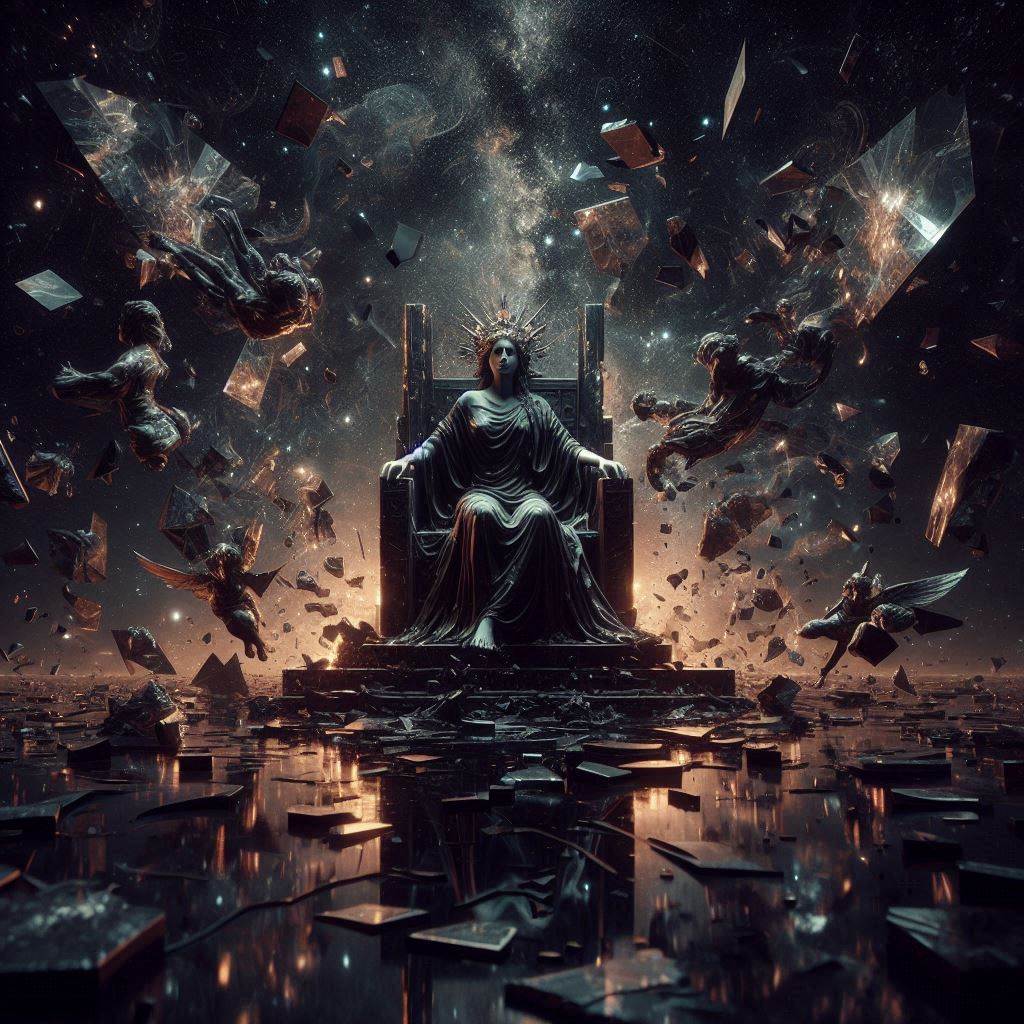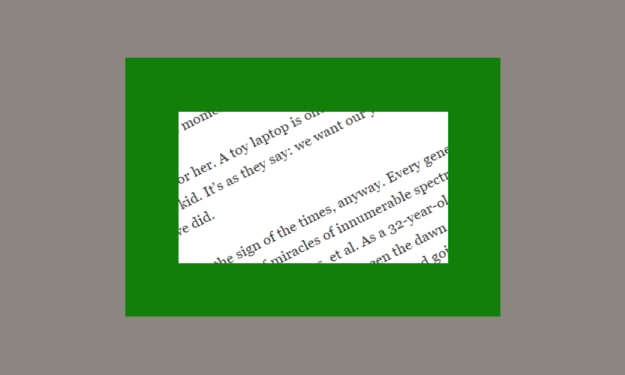The Power of Artificial Intelligence in Digital Art - Auctioned at Christie's for $432,500
AI is not just a tool for generating art independently; it also serves as a valuable assistant to human artists.

Artificial Intelligence (AI) has made significant strides across various industries, and one of the most transformative applications of AI is in the realm of digital art. This blog explores the power of AI in digital art, delving into how it is revolutionizing creative processes, enhancing artistic capabilities, and challenging our perceptions of creativity.
Introduction
Digital art has evolved significantly since its inception, with artists constantly exploring new tools and technologies to push the boundaries of creativity. The advent of AI has introduced a new era of possibilities, where machines can assist, augment, and even independently create art. This blog will examine the multifaceted impact of AI on digital art, from its role in the creative process to its influence on the art market and the broader cultural implications.
The Intersection of AI and Digital Art
Understanding AI in Art
AI in art typically involves the use of machine learning algorithms, particularly neural networks, to generate, modify, or enhance artistic works. These algorithms are trained on vast datasets of existing art to learn styles, patterns, and techniques. By leveraging this knowledge, AI can produce original pieces, mimic specific artistic styles, or assist artists in overcoming creative blocks.
Historical Context
The concept of machines creating art is not new. Early experiments in algorithmic art date back to the 1960s, with artists and computer scientists like Harold Cohen pioneering the field with programs like AARON, which could create abstract drawings. However, the true potential of AI in art began to unfold with the development of deep learning techniques and increased computational power in the 21st century.
How AI is Revolutionizing the Creative Process
Generative Art
One of the most prominent applications of AI in digital art is generative art. Generative art refers to art created with the help of autonomous systems, often involving algorithms that can produce unique and complex designs.
GANs and Creativity
Generative Adversarial Networks (GANs), a class of AI algorithms, have become particularly influential in this domain. GANs consist of two neural networks—a generator and a discriminator—that work together to create realistic images. The generator creates images, while the discriminator evaluates them against real images, guiding the generator to produce increasingly convincing art. This process can yield stunning results, from photorealistic images to abstract compositions.
Style Transfer
Style transfer is another exciting application of AI in digital art. This technique involves transferring the style of one image (e.g., a famous painting) onto another image (e.g., a photograph). Artists can use style transfer to experiment with different aesthetics and create visually striking pieces that blend various influences.
Enhancing Productivity
AI-powered tools can enhance productivity by automating repetitive tasks, such as colorization, background removal, and texture generation. This allows artists to focus more on the creative aspects of their work, saving time and effort.
Overcoming Creative Blocks
Artists often face creative blocks, where inspiration and ideas seem elusive. AI can help overcome these blocks by suggesting new directions, providing inspiration, and generating initial concepts that artists can refine and develop further.
The Impact on Artistic Capabilities
Expanding Artistic Boundaries
AI pushes the boundaries of what is possible in art, enabling the creation of pieces that would be challenging or impossible for humans to achieve alone. For example, AI can generate highly detailed and intricate patterns, complex fractal designs, and hyper-realistic portraits that might take a human artist years to complete.
Collaboration Between Humans and Machines
The collaboration between human artists and AI is a growing trend. Artists like Mario Klingemann, also known as Quasimondo, use AI as a co-creator, blending human intuition and machine precision to produce innovative artworks. This partnership allows for a fusion of human creativity and machine efficiency, resulting in unique and compelling art forms.
Democratization of Art Creation
AI-powered tools are making art creation more accessible to a broader audience. Platforms like DeepArt and RunwayML provide user-friendly interfaces for generating art using AI, enabling individuals with little or no artistic training to create impressive pieces. This democratization of art creation is expanding the pool of creators and diversifying the types of art being produced.
AI in the Art Market
The Rise of AI-Generated Art
AI-generated art has gained significant attention in the art market. In 2018, an AI-generated portrait titled "Portrait of Edmond de Belamy" created by the Paris-based collective Obvious was auctioned at Christie's for $432,500, far exceeding its estimated value. This sale marked a pivotal moment, highlighting the commercial potential of AI in art.
Market Acceptance and Criticism
While AI-generated art is gaining acceptance, it also faces criticism. Some argue that AI lacks true creativity and that AI-generated works are merely derivative, lacking the emotional depth and intentionality of human-created art. Others view AI as a legitimate tool that can produce meaningful and valuable art, emphasizing the collaborative potential between humans and machines.
Authenticity and Ownership
The rise of AI in art raises important questions about authenticity and ownership. When an AI creates art, who owns the copyright? The programmer, the user, or the AI itself? These questions are still being debated, and legal frameworks are evolving to address the complexities introduced by AI-generated works.
Cultural Implications and Ethical Considerations
Redefining Creativity
AI challenges traditional notions of creativity. If a machine can create art, what does it mean to be creative? This question is prompting a reevaluation of creativity, suggesting that it may not be an exclusively human trait. Instead, creativity might be seen as a process that can be facilitated by both humans and machines.
Ethical Concerns
The use of AI in art also raises ethical concerns. Issues such as bias in AI algorithms, the potential for AI to reproduce harmful stereotypes, and the environmental impact of training large AI models are important considerations. Artists and technologists must navigate these ethical challenges to ensure that AI is used responsibly and inclusively.
The Future of AI and Digital Art
The future of AI in digital art is both exciting and uncertain. As AI technology continues to advance, its capabilities in art creation will expand, leading to new forms of expression and collaboration. However, the role of AI in art will also require ongoing reflection and adaptation to address the evolving ethical, cultural, and legal challenges.
Conclusion
The power of artificial intelligence in digital art is transforming the creative landscape in profound ways. From generative art and style transfer to AI as a creative assistant, AI is enhancing artistic capabilities and pushing the boundaries of what is possible. While the rise of AI-generated art in the market presents new opportunities, it also prompts important questions about authenticity, ownership, and the nature of creativity.
As we navigate the intersection of AI and art, it is essential to embrace the potential of this technology while remaining mindful of the ethical considerations it entails. The future of AI in digital art promises to be a dynamic and evolving journey, reshaping our understanding of creativity and the role of technology in the arts.
About the Creator
Oliver Green
❤️ 30 Years old
💰 Sink ( Single income, no kids)
👔 I work as a Blogger
📊 I love ChatGPT and AI
💻 Hobbies: Gamer, and the Reading.
Enjoyed the story? Support the Creator.
Subscribe for free to receive all their stories in your feed. You could also pledge your support or give them a one-off tip, letting them know you appreciate their work.






Comments
There are no comments for this story
Be the first to respond and start the conversation.